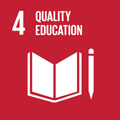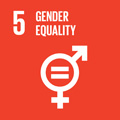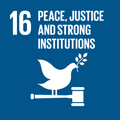- Docente: Maurizio Ascari
- Credits: 9
- SSD: L-LIN/10
- Language: English
- Teaching Mode: In-person learning (entirely or partially)
- Campus: Bologna
- Corso: First cycle degree programme (L) in Foreign Languages and Literature (cod. 0979)
-
from Sep 29, 2025 to Dec 18, 2025
Learning outcomes
Upon completing this course students will have acquired an in-depth knowledge of the history of English literature. They will have obtained critical insight into a selection of literary works and will be capable of evaluating their literary qualities, analysing them with the help of precise critical metholodogies. They will have acquired the theoretical tools they need to recognise the formal, thematic and stylistic components of the works included in the syllabus, relating them to their historical and cultural contexts. They will be able to discuss, translate and relate the contents of these works from a linguistic, historical and philological viewpoint.
Course contents
“The past is a foreign country”: Love, Sex, War and the English Country House
“The past is a foreign country: they do things differently there.” With these words begins L.P. Hartley’s The Go-Between (1953), the great novel of a writer that today is virtually unknown. This text explores the relation between memory, trauma and identity by reverting to the past in which the present is rooted. We may consider the past as finished, even remote, but this assumption can easily be questioned. The French philosopher Jacques Derrida encapsulated the paradoxical quality of the past in the paradigm of hauntology, a term he coined (playing on the homophony between two French words – hantologie and ontologie) to describe the spectral presence of the past in the present.
This course aims to investigate the strategies through which literature responded to some of the major twentieth century events, starting from the two world wars and ending with Brexit, always with a focus on the English country house, intended as a symbol of order and tradition, but also as a site of conflict. We will explore individual and collective traumas, ideological and political rifts, class divides and social prejudices, together with the transgressive power of sexuality. Our critical itinerary will also repeatedly lead us into colonial territories with the aim to trace a wider range of social dynamics, symbolic values and literary experiences. This approach is meant to foster a better understanding of the complex network of exchanges, frictions and struggles that in the first half of the 20th century marked the relationship between Great Britain and the empire.
Coherently with this perspective, our first literary text will take us to New Zealand, the home country of Modernist writer Katherine Mansfield, whose story Prelude (1918) depicts the experiences of a family when they leave Wellington to relocate in the countryside. We will investigate both Mansfield’s experimental narrative techniques and the deep personal meaning this story had as an act of commemoration after the death of her brother during World War One. We will also read Mansfield’s “Marriage à la Mode”, a scathing satire aimed at a bunch of intellectuals and artists who parasitically reside in an English country house. The story was inspired by the circle of Lady Ottoline Morell, a patron of the arts who turned her country mansion – Garsington – into a refuge for artists who thus escaped being sent to the front at the time of World War One.
A very different message transpires from D.H. Lawrence’s Lady Chatterley’s Lover (1928). Set in the years following World War One, the book describes the return of an ex-combatant whose body is mutilated and whose psyche is traumatised, exploring his uneasy relation with the surrounding environment and his wife. In this novel – a story of regeneration in which Eros ultimately prevails over Thanatos – the destructive power of war, epitomising the dark side of industrial mechanism, triggers transgression against the background of a country house that is deprived of its aura and turned into an empty relic of the past.
Strongly indebted to Lawrence’s book, L.P. Hartley’s above-mentioned The Go-Between is narrated by an old man who revisits his childhood through a diary, retrieving contact with his authentic nature, which was warped by trauma. It is against the backdrop of a country house that Hartley set this story, which not only depicts the devastating impact of war on the social texture, but which also explores the disruptive power of desire. In Hartley’s text the impossible love story between the heroine and a man of lower social status precipitates into tragedy because a young boy has been chosen by the couple as their go-between. Hartley’s narrative soon takes on an allegorical quality, since the novel opens in the year 1900, which the young hero imagines as ‘the dawn of a Golden Age’, and touches upon as many as three great conflicts, from the Second Boer War (1899-1902) to the two world wars.
The course will once again shift from British literature to the wider territory of literatures in English to present the symbolic value of the country house from a different perspective and in relation to other relevant ideological issues. What we find at the core of Irish writer Jennifer Johnston’s How Many Miles to Babylon? (1974) is the claustrophobic world of the Irish big house – a site of power that is represented as divorced from the surrounding social context, a symbol of the opposition between the Anglo-Protestant ruling class and the subordinate classes of Irish Catholics. Written in the 1970s, which were marked by a widespread contestation of institutions and traditions, the book combines a socio-political critique of British domination in Ireland with an equally fierce depiction of the military hierarchies in the years of World War One, ultimately contrasting this divisive logic with the friendship between the two protagonists.
After shedding light on the Irish perspective, we will discuss Ian McEwan’s Atonement (2001), a Postmodernist classic that engages in dialogue with both Lawrence’s and Hartley’s novels, providing yet another link to this literary chain. Once again, in this novel the country house – intended as the emblem of power, tradition and a rigidly partitioned social system – short-circuits with the dynamics of desire due to the catalysing role of a child, and once again the text expands on the devastating effects of war.
While these intertextual connections dramatise the impact of the two world conflicts, bringing us to the threshold of the new millennium and its Postmodernist culture of memory, the course will end on Julia Winter’s The Brexit House (2023), a debut novel in which a country house on top of Dover’s white cliffs (an iconic image of England as seen from Europe) provides the background for a family drama, symbolising the wider national debate – and the internecine strife – that the Brexit referendum ignited.
Readings/Bibliography
Primary sources:
Students are expected to read four of these six texts (Mansfield’s two short stories count as one text, given their brevity in comparison to the novels):
1) Katherine Mansfield, Prelude (1918) + ‘Marriage à la Mode’ (1921)
2) D. H. Lawrence, Lady Chatterley’s Lover (1928)
3) L. P. Hartley, The Go-Between (1953)
4) Jennifer Johnston, How Many Miles to Babylon? (1974)
5) Ian McEwan, Atonement (2001)
6) Julia Winter, The Brexit House (2023)
If possible, students are invited to buy the following editions, which include useful critical materials:
D. H. Lawrence, Lady Chatterley’s Lover (1928), introduction by Doris Lessing, ed. Michael Squires, Hardmondsworth, Penguin, 2007
L. P. Hartley, The Go-Between (1953), introduction by Douglas Brooks-Davies, Harmondsworth: Penguin, 2004
Critical sources:
While discussing literary texts during the exam both those students who have actively participated in the course and those who have not been able to do so will be expected to offer a critical discussion of these primary sources. To this end, all students are expected to study five of these six critical sources:
Finney, Brian, ‘Briony’s Stand Against Oblivion: The Making of Fiction in Ian McEwan’s Atonement’, Journal of Modern Literature, Vol. 27, No. 3, Winter 2004, pp. 68-82.
Hankin, Cherry, ‘Prelude’, in Katherine Mansfield and Her Confessional Stories, New York, St. Martin’s Press, 1983, pp. 116-135.
Hauthal, Janine, ‘Explaining Brexit: (Re-)Thinking the Nexus of Nation and Narration in Pre- and Post-Referendum British Fiction’, in Postfaktisches Erzählen? Post-Truth – Fake News – Narration, eds A. Weixler, M. Chihaia, M. Martínez, K. Rennhak, M. Scheffel, & R. Sommer, Berlin: De Gruyter, 2021, pp. 297-322.
Ingersoll, Earl G., ‘Intertextuality in L.P. Hartley’s The Go-Between and Ian McEwan’s Atonement’, Forum of Modern Language Studies, Vol. xl, No. 3, 2004, pp. 241-258.
Meyers, Jeffrey, ‘Theme and Variations: Lady Chatterley’s Lover and L. P. Hartley’s The Go-Between’, Gettysburg Review, Vol. 23, Issue 1, Spring 2010, pp. 120-133.
Yoshida, Ayami, ‘Masculinity denied in Jennifer Johnston’s How Many Miles to Babylon?’, Journal of Irish Studies, Vol. 33, October 2018, pp. 45-53.
Literary History
Students will be required to prove their knowledge of the main tendencies of twentieth century English literature. Reference text: Lilla Maria Crisafulli e Keir Elam, Manuale di letteratura e cultura inglese, Bologna: Bononia University Press, 2009, pp. 327-70 (Il Novecento: Introduzione; Modernisti e Antimodernisti; Il romanzo); 385-94 (Il teatro di Samuel Beckett); 463-92 (Letteratura, nazionalità e regionalismo). This does not apply to Erasmus students.
For those who cannot attend classes
Those who cannot attend classes are not expected to study any additional literary/critical texts. Should they feel the need to do so, they can contact the teacher.
Teaching methods
This course will be taught on-site and will include
1) face to face classes, aiming to provide participants with the critical tools they need to interrogate and understand literary texts, both in terms of linguistic analysis and of historical/cultural contexts;
2) seminars in which students will discuss literary texts in an informal context, both in groups and interacting with the teacher;
3) the viewing and discussion of films;
4) students' presentations.
Students with SLD or temporary or permanent disabilities. It is suggested that they get in touch as soon as possible with the relevant University office (https://site.unibo.it/studenti-con-disabilita-e-dsa/en ) and with the lecturer in order to seek together the most effective strategies for following the lessons and/or preparing for the examination.Any requests for adjustments must be made within 15 days of the exam date by sending an email to the lecturer and entering the email address disabilita@unibo.it (in case of a disabling condition) or dsa@unibo.it (for students with DSA) in Cc.Assessment methods
Exam
Students will have to take a 20/25-minute oral exam, which will be divided into two parts.
- The first part will focus on the history of 20th century English literature, and it will be in Italian, like the Manuale di letteratura e cultura inglese students are expected to study.
- The second part will aim to evaluate the students’ critical and methodological skills through a discussion of the literary and critical texts we will have analysed during the course.
A ‘prova in itinere’ – covering the history of 20th century English literature – will be scheduled before the end of the course.
NB: In order to take this exam, those students who are registered in Bologna need to have already passed the following exams: Letteratura inglese 1, Letteratura inglese 2. This does not apply to Erasmus students.
Teaching tools
The Powerpoint presentations that will be shown during the course will then be made available for students on this website: https://virtuale.unibo.it/
Office hours
See the website of Maurizio Ascari
SDGs



This teaching activity contributes to the achievement of the Sustainable Development Goals of the UN 2030 Agenda.
